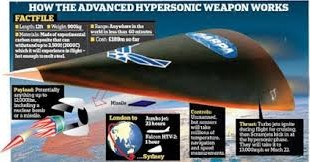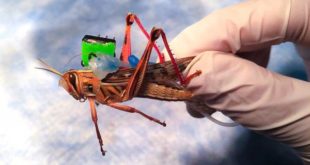A high-payoff target, also known as an HPT, is a high-value target whose loss to the enemy will significantly contribute to the success of a friendly course of action. Also called HVT, the loss of high-value targets would be expected to seriously degrade important enemy functions throughout the friendly commander’s area of interest. The term has been widely used in the news media for Osama Bin Laden and …
Read More »Ramjet Powered Artillery Round can penetrate anti-access/area denial networks
One of the major lessons from Ukraine’s artillery war is that the side that can shoot farthest dominates the battlefield. According to the report, Russian howitzers are expending 20,000 shells daily on average, compared to 6,000 fired by Ukraine. The ratio for rocket artillery and ballistic-missile launches is even worse. …
Read More »DARPA OpFires testing ground-based intermediate-range Hypersonic boost-glide Weapon for US Army
The 2018 National Defense Strategy requires that the DOD provide combat-credible military forces to deter war and protect the security of the nation. Specifically, the Joint Force must be able to strike diverse targets inside adversary air and missile defense networks to destroy mobile power-projection platforms and time-sensitive high-value targets. …
Read More »Missile defense test and measurement
Militaries around the world are increasingly facing a formidable strategic threat environment in terms of complexity, lethality, range, sophistication, and number of threats. These range from Fifth-generation stealth fighters, unmanned air vehicles, and more maneuverable and precision-guided ballistic, cruise, and Hypersonic missiles that are becoming widely proliferated to become more …
Read More »Hyper-intelligent systems and Lethal Autonomous Weapons (LAWs) are gravest risk to mankind
Robotics has made significant progress, since its first deployment as an industrial robot more than 50 years ago. Robots are now days being used extensively in manufacturing, services, healthcare/medical, defense, and space. They have enhanced safety of humans from dangerous tasks, improved the productivity and the quality of life. In …
Read More »Rising employment of AI in Air & Missile Defense as threats become Hypersonic
Militaries around the world are increasingly facing a formidable strategic threat environment in terms of complexity, lethality, range, sophistication, and number of threats. These range from Fifth-generation stealth fighters, unmanned air vehicles, and more maneuverable and precision-guided ballistic, cruise, and Hypersonic missiles that are becoming widely proliferated to become more …
Read More »Semi-Active Lasers/Passive seeker technology
Guided missiles work by tracking the moving target’s location in space by specific methods (e.g. using a radar or following its heat signature), chasing it down, and finally hitting it with accuracy. Guidance systems in missiles can be of various types, which serve different operational purposes. Homing guidance systems control the …
Read More »Green Energetic Materials and Munitions technologies with enhanced environmental and occupational safety
Energetic materials and munitions are used across DoD in mission critical applications such as rockets, missiles, ammunition, and pyrotechnic devices. In these applications, energetic materials and munitions must perform as designed to ensure success in both training and combat operations. In these applications, energetic materials and munitions must perform …
Read More »Hypersonic Missile Defense solutions required as hypersonic missiles enter deployment by China, Russia and US
Hypersonic refers to aircraft, missiles, rockets, and spacecraft that can reach atmospheric speeds in excess of Mach 5, which is almost 4,000 miles per hour or 6,125 kilometers per hour or more. Flying along the edge of space while gliding and maneuvering these missiles would strike targets with unprecedented speed …
Read More »Animals and Insects Warfare employ them from Mobile Biological Sensors to weapons to attack the enemy
Throughout history animals have accompanied men into combat as modes of transport and communication, protectors and companions. They have fulfilled a variety of roles – from carrying men and munitions to evacuating the wounded, performing guard and sentry duties to carrying out search and rescue operations, detecting gas in trenches to locating …
Read More » International Defense Security & Technology Your trusted Source for News, Research and Analysis
International Defense Security & Technology Your trusted Source for News, Research and Analysis





